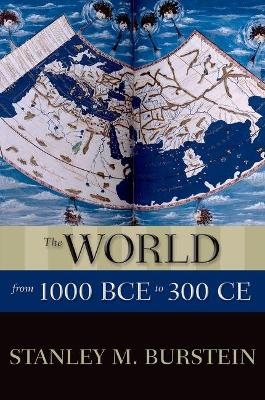
The World from 1000 BCE to 300 CE
Oxford University Press Inc (Verlag)
978-0-19-933614-2 (ISBN)
This process began with the collapse of the Bronze Age empires in the east and west, widespread population movements, and almost chronic warfare throughout Afro-Eurasia, while the cavalry revolution transformed the nomads of the central Asian steppes into founders of tribal confederations assembled by charismatic leaders and covering huge territories. At the same time, new artistic and intellectual movements appeared, including the teachings of Socrates, Confucius, the Buddha, and Laozi. Increased literacy also allowed people from a wide range of social classes such as the Greek soldier Xenophon, the Indian Buddhist emperor Ashoka, the Roman emperor Marcus Aurelius, and elite women such as the poetess Sappho, the Christian martyr Perpetua, and the scholar Ban Zhao to create literary works.
When the period ended in 300 CE, conditions had changed dramatically. Temperate Afro-Eurasia from the Atlantic to the Pacific was dominated by a handful of empires--Rome, Sassanid Persia, and Jin Empire-that ruled more than half the world's population, while an extensive network of trade routes bound them to Southeast and Central Asia and Sub-Saharan Africa and made possible the spread of new book based religions including Christianity, Manichaeism, Zoroastrianism, and Buddhism, thereby setting the stage for the next millennium of Afro-Eurasian history.
Stanley M. Burstein is Professor Emeritus of History and former chair of the History Department at California State University, Los Angeles. He is the author or co-author of seventeen books, and a past-president of the Association of Ancient Historians.
Editors' Preface
Preface
Chapter 1 The New World of the Early First Millennium BCE (Ca. 12th Century BCE - 11th Century BCE)
Chapter 2 The Early Iron Age (Ca. 10th-7th Centuries BCE)
Chapter 3 East Meets West: The Rise of Persia (Ca. 6th-5th Centuries BCE)
Chapter 4 The New World of the Macedonian Kingdoms (Ca. 4th -2nd Centuries BCE)
Chapter 5 The Rise of the Peripheries: Rome and China (Ca. 3rd-2nd Centuries BCE)
Chapter 6 A New Order in Afro-Eurasia (Ca. 2nd Century BCE-2nd Century CE)
Chapter 7 Crisis and Recovery (3rd Century CE)
Chronology
Notes
Further Reading
Websites
Acknowledgments
| Erscheinungsdatum | 19.04.2017 |
|---|---|
| Reihe/Serie | New Oxford World History |
| Zusatzinfo | 22 illus. |
| Verlagsort | New York |
| Sprache | englisch |
| Maße | 236 x 160 mm |
| Gewicht | 397 g |
| Themenwelt | Geschichte ► Allgemeine Geschichte ► Vor- und Frühgeschichte |
| Geschichte ► Allgemeine Geschichte ► Altertum / Antike | |
| Geschichte ► Teilgebiete der Geschichte ► Kulturgeschichte | |
| ISBN-10 | 0-19-933614-8 / 0199336148 |
| ISBN-13 | 978-0-19-933614-2 / 9780199336142 |
| Zustand | Neuware |
| Haben Sie eine Frage zum Produkt? |
aus dem Bereich


